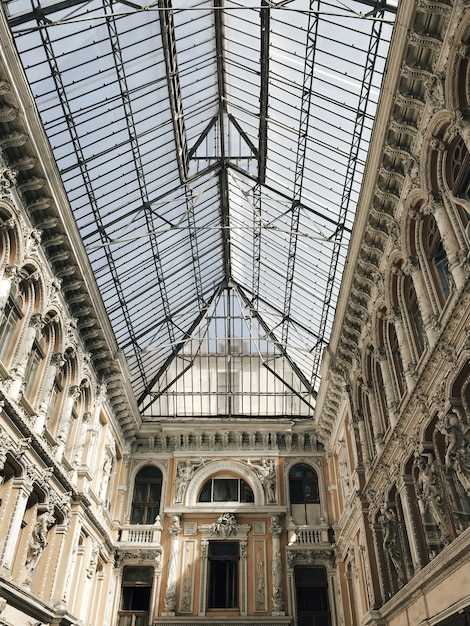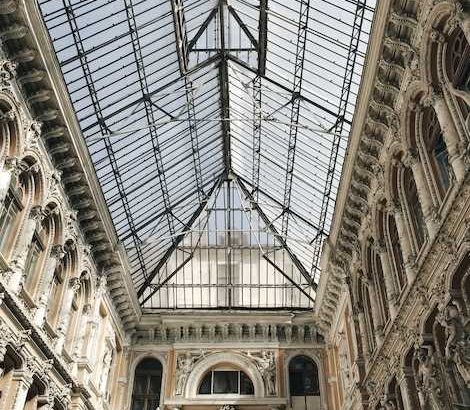
Throughout history, civilizations have expressed their cultural identities through the design and construction of remarkable structures. From ancient times to the present day, architectural marvels stand as testaments to human creativity and ingenuity. Exploring diverse architectural styles, ranging from time-honored classics to cutting-edge contemporary designs, offers us a fascinating glimpse into the rich tapestry of global traditions.
Delving into the depths of architectural heritage, we witness the evolution of artistic expressions that embody the spirit of different regions. Each locale offers a distinctive flavor, captured through distinct architectural vocabularies and nuanced craftsmanship. In every corner of the globe, architects have deftly adapted their designs to local climates, landscapes, materials, and cultural practices, resulting in captivating structures that harmonize with their surroundings.
Embark on a journey across continents, from the grandeur of ancient palaces to the sleek simplicity of modern skyscrapers. Traverse the globe and uncover the hidden stories behind architectural masterpieces that have stood the test of time. Immerse yourself in the architectural splendor, where every building whispers tales of triumphs, challenges, and the vibrant spirit of cultures yet to be discovered.
The Magnificence of Classical Architecture
In this section, we will explore the awe-inspiring grandeur of classical architecture, a style that has transcended time and continues to captivate us with its timeless beauty. From the elegant simplicity of ancient Greek temples to the majestic splendor of Roman monuments, classical architecture represents a pinnacle of artistic and architectural achievement.
A Tribute to Enduring Beauty
Classical architecture is characterized by its harmonious proportions, balanced symmetry, and meticulous attention to detail. It embraces the principles of order, balance, and harmony, creating buildings and structures that exude a sense of grandeur and timelessness. The classical style has inspired countless architects throughout history, influencing the design of iconic buildings and landmarks around the globe.
The Language of Columns and Capitals
| Column Order | Characteristics | Examples |
|---|---|---|
| Doric | Simple and sturdy, with a plain capital | The Parthenon, Athens |
| Ionic | Graceful scrolls, known as volutes, on the capital | Erechtheion, Athens |
| Corinthian | Elaborate capital adorned with acanthus leaves | Pantheon, Rome |
The use of columns is a defining characteristic of classical architecture. Different orders of columns, such as the Doric, Ionic, and Corinthian, each have their own distinct features and symbolism. These columns support entablatures, creating visually stunning facades and magnificent interior spaces.
Classical architecture stands as a testament to the skill and vision of ancient civilizations, as well as the enduring impact of their design principles. Its influence can be seen in the grand palaces, government buildings, and cultural landmarks that grace cities worldwide.
Unique Charm: Gothic Architecture and Its Influence
With its distinct and captivating appeal, Gothic architecture possesses a timeless allure that has left an indelible mark on the world of design and construction. This architectural style, known for its intricate details, soaring verticality, and pointed arches, has had a far-reaching influence on various aspects of culture and art. From religious structures to royal palaces, Gothic architecture has left an enduring legacy that continues to inspire and fascinate individuals today.
One of the defining characteristics of Gothic architecture is its verticality, which is highlighted by towering structures and elongated proportions. This vertical emphasis creates a sense of grandeur and spirituality, drawing the eyes upward towards the heavens. The use of pointed arches, ribbed vaults, and flying buttresses further enhances this verticality, allowing for the construction of soaring ceilings and expansive windows that flood the interiors with an ethereal glow.
| Key Features of Gothic Architecture | |
|---|---|
| 1. Pointed Arches | The use of pointed arches in doorways and windows adds elegance and height to the overall structure. |
| 2. Ribbed Vaults | Ribbed vaults, created through the intersection of diagonal arches, distribute weight more efficiently, allowing for taller and more open spaces. |
| 3. Flying Buttresses | External supports known as flying buttresses help counteract the lateral forces exerted on the walls, enabling the creation of large stained glass windows. |
The influence of Gothic architecture extends far beyond its aesthetic qualities. Its innovative structural elements paved the way for advancements in engineering and construction techniques. The meticulous craftsmanship and attention to detail demonstrated in Gothic buildings also had a profound impact on the decorative arts, inspiring intricate carvings, delicate stained glass windows, and ornate sculptures. Notably, the revival of Gothic architecture during the mid-19th century, known as the Gothic Revival, brought this style back into prominence and influenced the design of numerous notable buildings around the world.
Today, the charm of Gothic architecture continues to captivate and inspire architects, artists, and enthusiasts alike. From the towering spires of Notre-Dame Cathedral to the majestic arches of Westminster Abbey, Gothic buildings stand as testaments to the ingenuity and creativity of those who brought this style to life. The influence of Gothic architecture can be seen in various contemporary structures, as it has become a source of inspiration for architects seeking to evoke a sense of awe and reverence in their designs.
In conclusion, Gothic architecture’s unique charm lies in its verticality, intricate details, and enduring influence on art and culture. From its origins in the medieval period to its revival in the 19th century and its continued impact on contemporary design, Gothic architecture remains an architectural style admired for its unparalleled beauty and grandeur.
The Renaissance Revival: Exploring Baroque and Neoclassical Architecture
In this section, we delve into the fascinating world of Renaissance Revival architecture, with a focus on the distinctive styles of Baroque and Neoclassical. These architectural movements emerged during periods of renaissance and revival, showcasing a fusion of artistic influences and a sense of grandeur.
Baroque architecture, characterized by its ornate and dramatic elements, was an extravagant response to the restraint of earlier styles. It embraced curves, domes, and ornamental motifs to create a sense of movement and drama. Buildings adorned with intricate details and elaborate sculptures became the hallmark of this style, elevating the experience of architecture to a theatrical spectacle.
On the other hand, Neoclassical architecture drew inspiration from the grandeur and elegance of ancient Greek and Roman designs. With its emphasis on symmetry, balance, and harmonious proportions, Neoclassical architecture aimed to evoke a sense of order and rationality. The use of columns, pediments, and clean lines became the defining features of this style, reflecting a desire to revive the ideals of classical antiquity.
Both Baroque and Neoclassical architecture left a lasting impact on the architectural landscape, influencing the design of palaces, churches, and public buildings. The juxtaposition of the opulent and the refined in these styles evokes a sense of awe and admiration. Whether you wander through the lavishly decorated halls of a Baroque palace or appreciate the timeless simplicity of a Neoclassical facade, the Renaissance Revival architecture continues to captivate and inspire with its blend of extravagance and classical refinement.
The Rise of Modernism: International Style and its Impact
In the realm of architectural design, a revolutionary movement emerged that challenged traditional conventions and reshaped the way buildings were conceived and constructed. This movement, known as Modernism, revolutionized architectural principles and ushered in a new era of design characterized by simplicity, functionality, and an emphasis on form rather than ornamentation.
An Era of Innovation
The rise of Modernism can be traced back to the early 20th century, when architects and designers sought to break free from the constraints of classical and traditional styles. They embraced a new ideology that celebrated progress, technology, and the idea of designing structures that were relevant to the modern world.
Gone were the elaborate facades, decorative embellishments, and excessive ornamentation commonly associated with classical architecture. Instead, Modernist architects sought to create streamlined, minimalist designs that emphasized clean lines, open spaces, and the integration of natural light.
The International Style
One of the key movements within Modernism was the International Style, which emerged in the 1920s and 1930s. This architectural style aimed to create a universal language of design that transcended national boundaries and cultural influences.
The International Style embraced the use of materials such as steel, glass, and concrete, which allowed for greater flexibility in design and the creation of innovative structures. It prioritized functionality and efficiency, with buildings designed for specific purposes and tailored to meet the needs of the modern world.
The impact of the International Style was profound, influencing architectural design across the globe. Its principles and aesthetics shaped the skylines of major cities, as well as residential, commercial, and institutional buildings.
Moreover, the International Style laid the groundwork for future architectural movements, inspiring generations of architects to explore new possibilities and push the boundaries of design even further.
Contemporary Architectural Innovations: Pushing Boundaries and Embracing Sustainability
In the realm of modern architecture, there exists a relentless pursuit of innovation that knows no bounds. This section explores the cutting-edge developments that are reshaping the way we perceive and interact with our built environment. Beyond mere aesthetics, contemporary architects are pushing the boundaries of design and embracing sustainable practices to create structures that are not only visually stunning but also environmentally conscious.
Revolutionizing Materials and Techniques
One of the key areas where contemporary architects are making strides is in the exploration of new materials and construction techniques. Traditional building materials such as concrete and steel are being reimagined and combined with innovative compounds to enhance strength, reduce environmental impact, and increase energy efficiency. Additionally, advancements in 3D printing technology are enabling the creation of intricate architectural elements with unprecedented precision and speed.
Pioneering Sustainable Design
Another crucial aspect of contemporary architectural innovation lies in the integration of sustainable design principles. Architects worldwide are embracing the challenge of creating buildings that minimize their carbon footprint and symbiotically interact with their surroundings. This involves incorporating renewable energy systems, implementing efficient insulation and ventilation methods, utilizing natural light to reduce electricity consumption, and designing structures that harmonize with the natural landscape rather than imposing upon it.
Through these remarkable innovations, contemporary architects are not only redefining the possibilities of design but also operating as catalysts for change in the global architectural landscape. The fusion of boundary-pushing creativity and unwavering commitment to sustainability has the power to shape a future where buildings seamlessly blend with nature and contribute positively to the well-being of both individuals and the planet as a whole.
